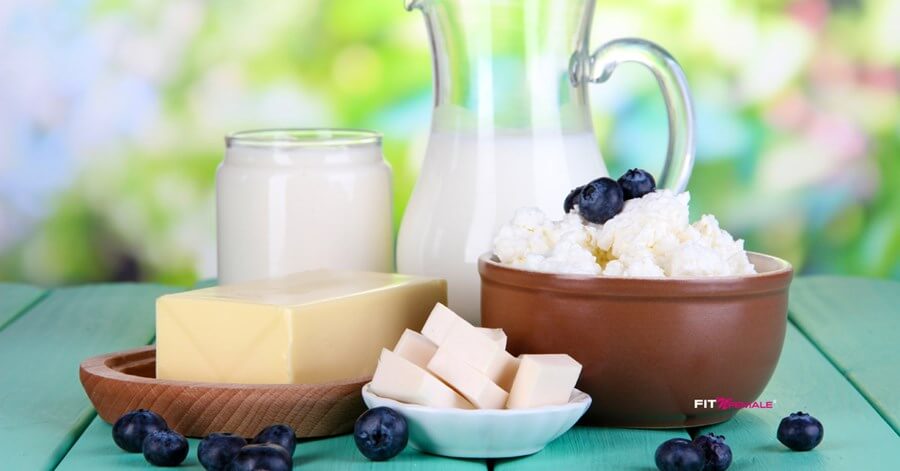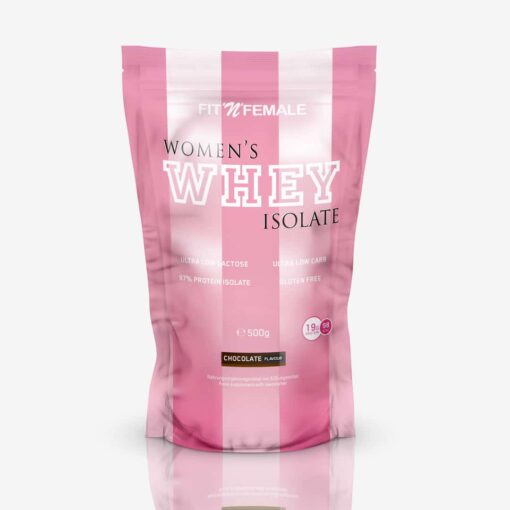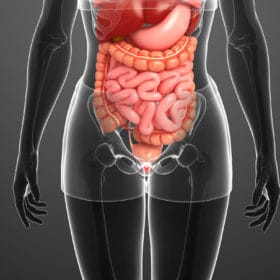You almost certainly know someone who avoids milk and dairy products like the devil avoids holy water. In the meantime, the anti-lactose movement has taken on such characteristics that even many people who do not lactose intolerant completely avoid dairy products and replace them with foods that are sometimes even poorer in nutrients.
To make one thing clear at this point, anyone who does not Lactose intolerance If you don't have lactose, you don't have to fear any disadvantages, but can take advantage of the enormous benefits of lactose-containing products. In this article, we want to take a closer look at the topic of whether it is worth it for you to give up milk and products or whether you can save yourself the effort. Ultimately, the decision is yours.
What does lactose intolerance really mean?
Although the terms lactase deficiency, lactose absorption disorder and lactose intolerance are often used interchangeably, they are never the same condition. While lactase deficiency simply means that the activity of the lactase enzymes is reduced, lactose resorption disorder refers to the fact that some of the lactose ingested with food cannot be digested. As lactose malabsorption is usually associated with lactose intolerance, the incidence is roughly the same. However, an absorption disorder does not necessarily result from an existing intolerance. Those who are lactose intolerant, however, show typical symptoms such as diarrhea, a bloated stomach, flatulence and diffuse abdominal pain.
Spread of lactose intolerance around the globe
According to statistics, around 70 percent of the world's adult population is lactose intolerant. Strictly speaking, most cases are not so much a general intolerance as an absorption disorder with similar but much milder symptoms. If we add the influence of the nocebo effect, the figure is once again put into perspective, as diffuse symptoms such as the above-mentioned complaints are often immediately associated with intolerance. Scientists were able to confirm this assumption in 2015. Interestingly, the intolerance or absorption disorder is closely linked to our ethnic background. This difference emerges as soon as babies are no longer fed milk. The world can almost be divided into two halves. On the one hand, there are the early civilized areas in Europe, North America, Australia and Eurasia, which already had a dairy and pastoral culture in ancient times. On the other hand, there are cultures in which milk processing hardly played a role historically. With a percentage of 80 to 100 percent of the total population, the proportion of people who have problems digesting lactose is particularly high in South America, South-East Asia and the south of the African continent. In contrast, the intolerance rate in Great Britain, northern Germany and Scandinavia is only between 0 and 15 percent of the total population. The reason for this is not a freak of nature, but quite simply the adaptability of our bodies, which have learned over many generations to process available nutrients efficiently. The situation is similar with the indigenous peoples of the Arctic, for example, who live almost exclusively on protein and fats.
Different sources of lactose
As you can probably imagine, milk and dairy products are the main source of lactose, which is simply a special sugar molecule made up of glucose and galactose. As lactose is mainly found in the liquid components of milk, butter and most types of cheese, for example, only contain small amounts of lactose of around 3 grams per 100 grams. Especially as the dose is so low, there is really no conclusive argument to stop someone who is lactose intolerant from enjoying a pizza with a thick layer of cheese. However, it is precisely this advertising promise that is often used to sell expensive lactase supplements or completely lactose-free cheese. Apart from liquid milk, only yoghurt and ice cream are foods that actually contain significant amounts of lactose, which can potentially cause problems. So if you only have a mild form of lactose intolerance or sub-optimal lactose digestion, you can certainly consume cheese and other dairy products.
However, if you have a severe lactose intolerance, you should consistently avoid the following foods:
- Buttermilk
- Quark
- Dried milk powder
- Malted milk
- Milk and all dairy products
- Sour cream
- Whey
- Whey protein
How much lactose does the body tolerate?
How much lactose your body can really tolerate if you are intolerant to lactose or have a corresponding digestive problem depends entirely on your symptoms. As in the case of gluten, someone who is severely lactose intolerant can experience severe discomfort from even the smallest amounts. However, this only applies to very few of those affected, especially as 99 percent of all people who believe they are lactose intolerant can easily eat significantly larger quantities than they would like to admit to themselves. This impression is often reinforced by the media. A classic case of the nocebo effect that we have already mentioned. A meta-analysis of several studies even showed that lactose-intolerant people could consume an average of up to 12 grams of lactose at once and up to 24 grams spread over the day without showing significant symptoms. As you can see, you don't need to switch to expensive almond milk unless you have a severe lactose intolerance. However, you should not diagnose this yourself, but have it done by a specialist doctor, especially as completely avoiding lactose also has disadvantages for your body.
Disadvantages of giving up lactose completely
Foods that contain lactose usually also contain numerous other valuable nutrients. So if you avoid lactose without a valid medical reason, you are depriving yourself of the opportunity to easily and directly meet your body's needs. This aspect becomes even more important if you are already a vegetarian or at least eat very little meat. After all, it is obvious that milk and dairy products are the most obvious source of protein in a vegetarian diet. These protein sources are also valuable because they offer an excellent mix of casein and whey protein, which is particularly interesting for strength athletes. Dairy products are also rich in micronutrients such as vitamins and minerals. Just one glass of milk contains significant amounts of vitamin A, vitamin B1, selenium, zinc and magnesium as well as: - 20 percent of the daily dose of potassium - 45 percent of the daily dose of phosphorus - 56 percent of the daily dose of calcium. - 50 percent of the daily dose of vitamin D. - 50 percent of the daily dose of riboflavin (B2). - 35 percent of the daily dose of vitamin B12. In addition, by unnecessarily avoiding foods containing lactose, you reduce the range of foods you need to prepare various healthy high-protein dishes.
How best to deal with milder forms of lactose intolerance
In most cases, as already mentioned, it is much better not to completely avoid lactose-containing foods, as this not only deprives you of a number of culinary delights, but also makes your life unnecessarily difficult in terms of protein and micronutrient supply. So apart from reducing your daily intake, what other options do you have to improve your body's tolerance to lactose? In this respect, there are four effective and study-proven approaches.
Enzymes
In order to digest lactose, your body needs the enzyme lactase. This is available to buy in tablet form, for example, so that you can take it with a meal. This is a very sensible solution, especially for people who are mildly to moderately lactose intolerant. However, the ultimate effectiveness depends on the individual's metabolism and the amount of lactose ingested. A study from 1993 came to the conclusion that lactase preparations can work effectively up to a lactose quantity of around 20 grams.
Lactose-reduced products
The food industry has discovered a new market, not least due to the somewhat dubious hype surrounding lactose intolerance. Of course, it is not only the companies that benefit from this, but also those of you who are actually lactose intolerant, as there are now various products such as milk and ice cream that do not contain lactose.
Pro- and prebiotic food supplements
One approach to significantly improving the tolerance of lactose is to influence the intestinal flora by supplying certain bacterial strains. These are available in the form of explicit supplements as well as in foods such as certain yogurts and fermented vegetables. In addition to the effect on lactose digestion, these bacterial cultures are also associated with numerous other health benefits, as the intestinal flora has an influence on our entire organism.
Consumption of conventional dairy products
Finally, you also have the option of getting your body used to digesting lactose the hard way. How does this work? Quite simply, you consume conventional dairy products and slowly increase the amount over many weeks. As scientific studies have shown, in most cases the intestinal flora is able to adapt to the new challenges. However, you should not do this type of adaptation to lactose consumption on your own if you are severely lactose intolerant.
Conclusion
Just because you get flatulence after consuming dairy products does not mean that you are severely lactose intolerant and should avoid lactose like the devil avoids holy water. Such symptoms are much more frequently caused by trans fats, industrially processed sugar or other additives. So don't let them drive you crazy and instead use our tips to make your gut fit for lactose digestion. If the symptoms still occur regularly, you should see a doctor anyway before you start making any kind of diagnosis yourself.
Whey Isolate
WHEY ISOLATE is isolated whey protein with 97% protein. It is the ultimate protein product with a very low fat, carbohydrate and lactose content and is also suitable for lactose intolerant people.
Whey Isolate





